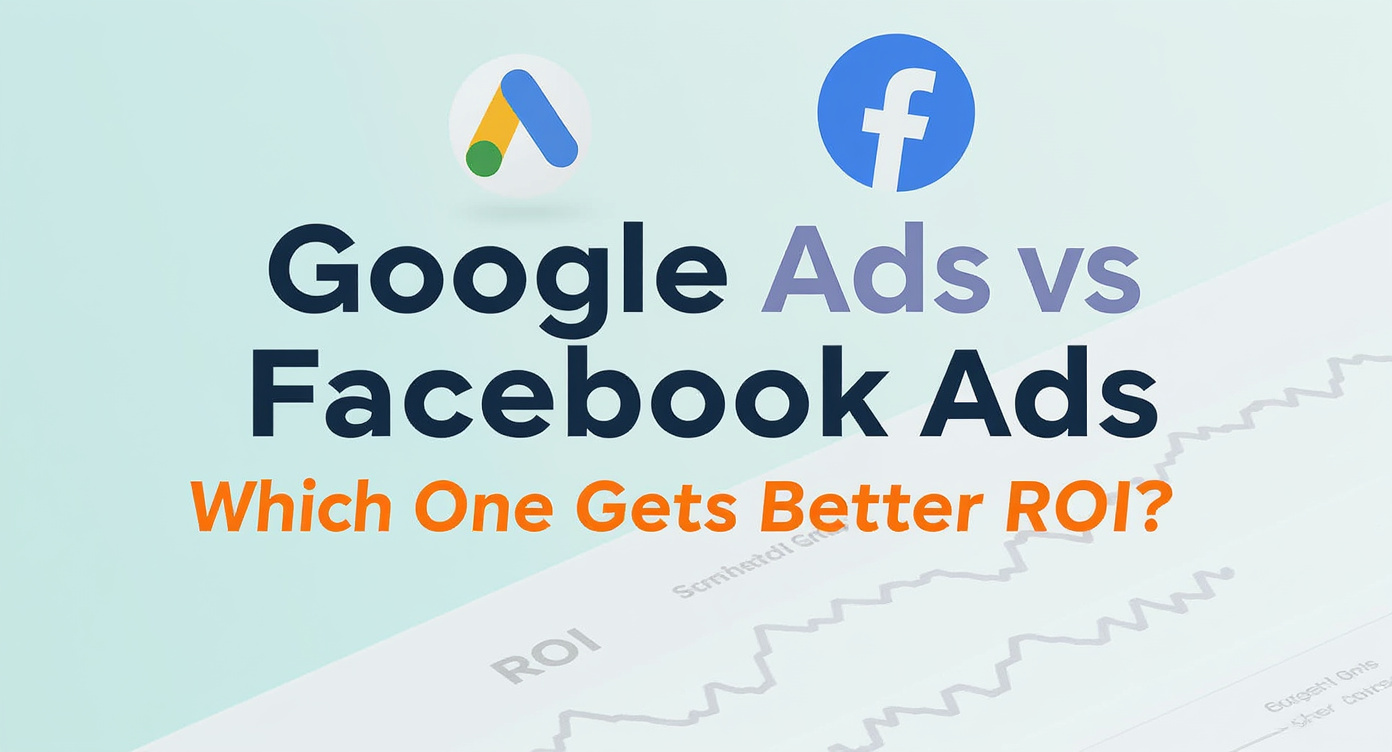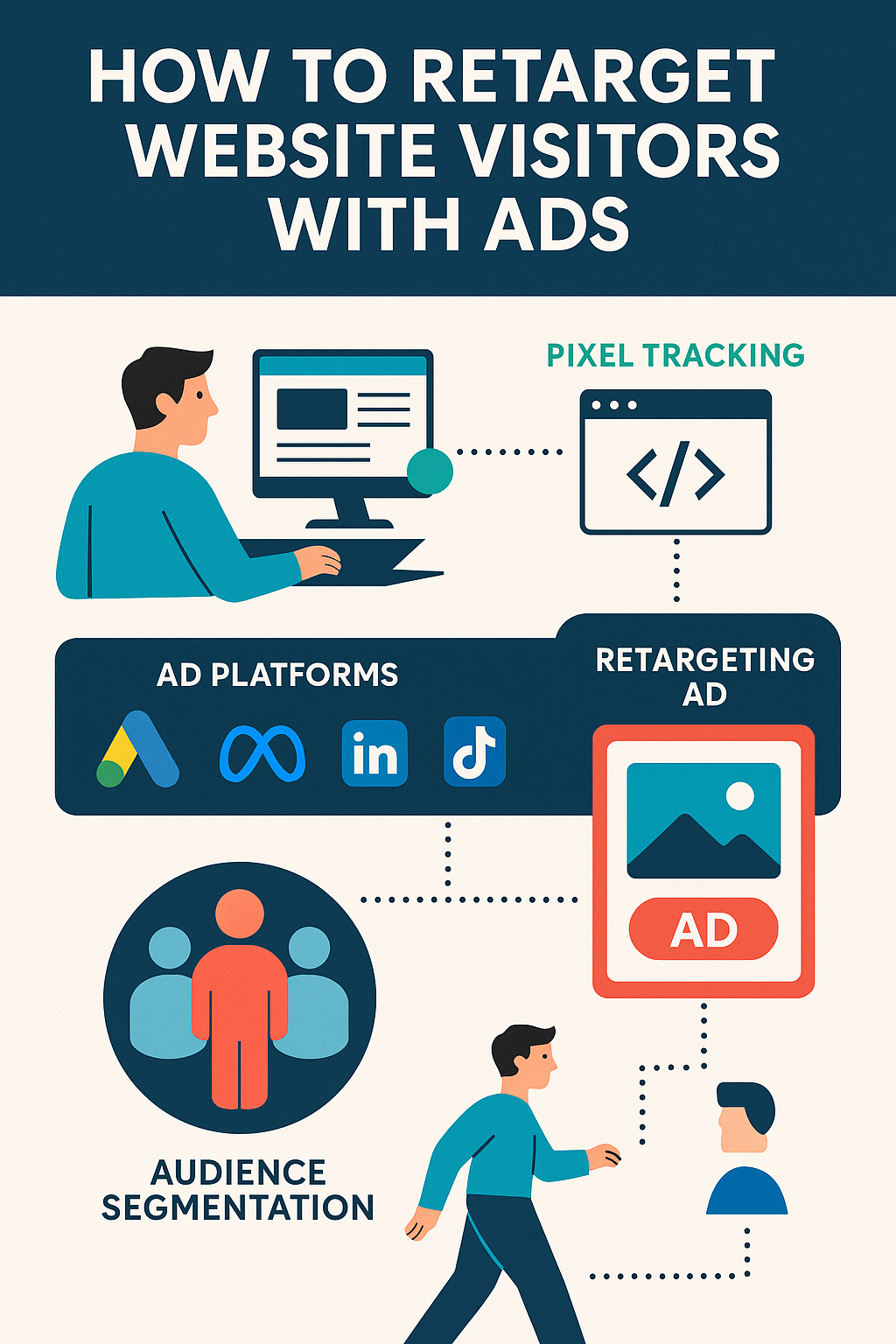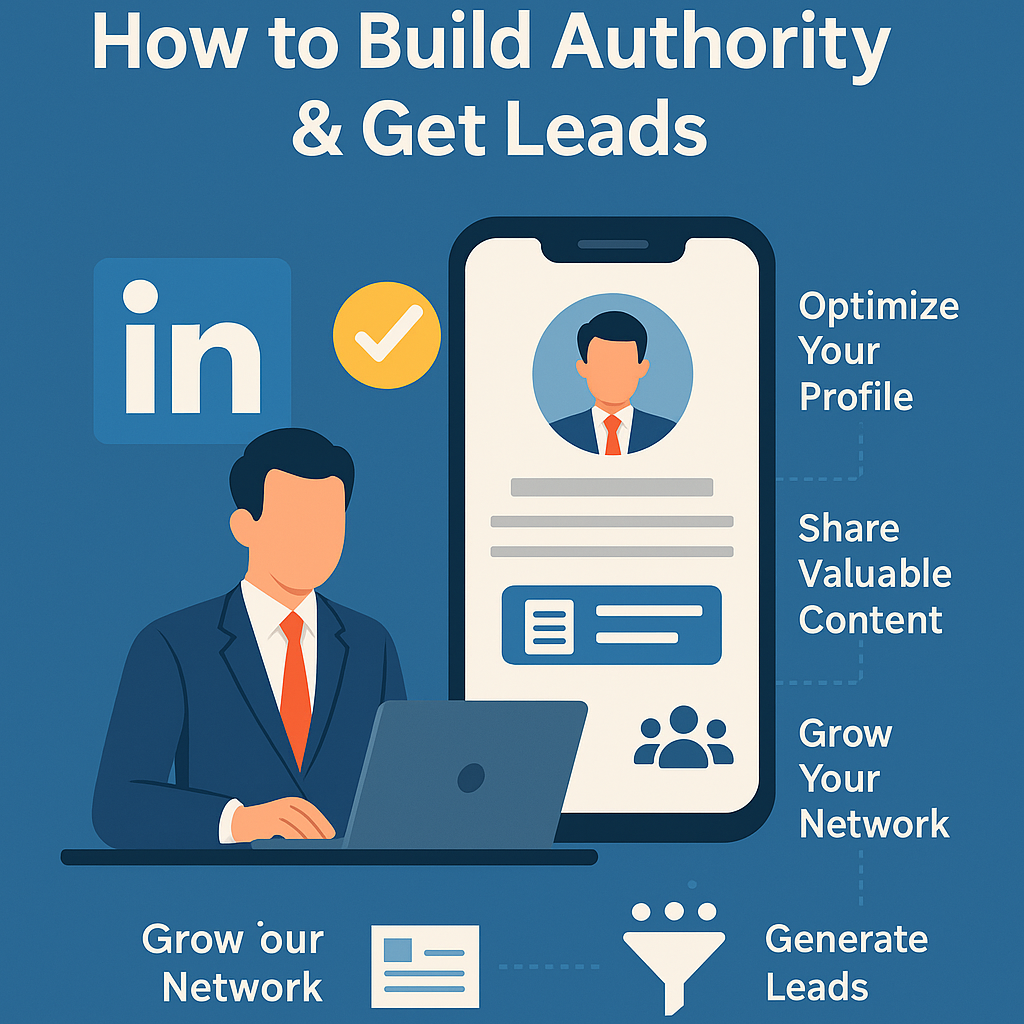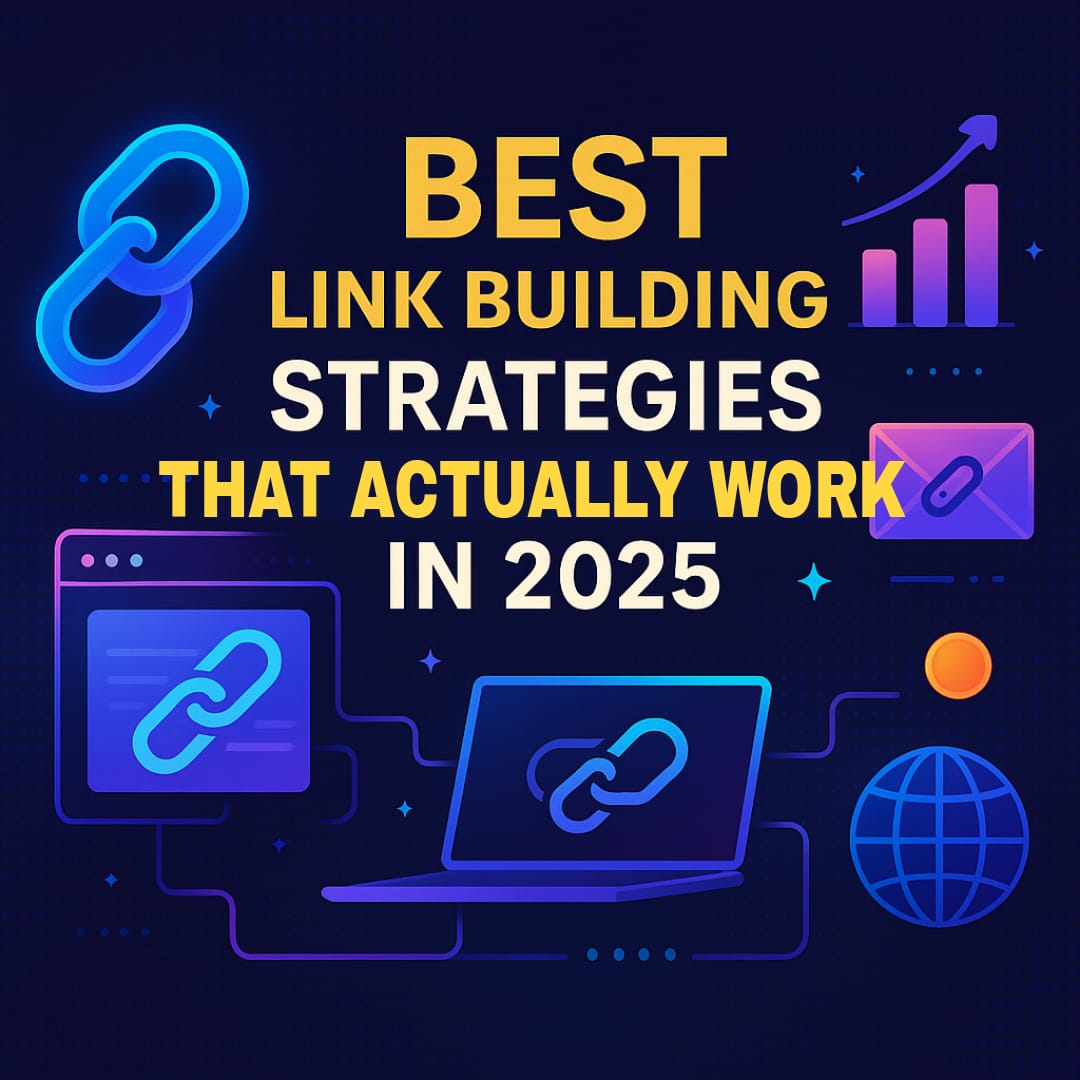Google Ads vs Facebook Ads: Which One Gets Better ROI?
Table of Contents
Introduction
In the digital age, online advertising is the driving force behind marketing today. Among prominent players, Google Ads and Facebook Ads are the two largest players in the paid ads game. Both platforms have enormous reach, advanced targeting, and ad formats across many different types of media. But sometimes marketers are faced with this ultimate question: Which platform provides the best ROI?
ROI does not just mean clicks or impressions it is really about how much money you are making back for every dollar you are spending. Picking the right ad platform means understanding how they ecosystems work, who they reach, how well each option fits into the goals of your business.
This article will provide deep insight into Google Ads vs Facebook Ads, examining their strengths, weaknesses, and effective instances of working in the wild. By the end, you will have a clearer idea of where to spend your money for the most gain.
As per WebFX, Tracking your return on investment (ROI) is essential for success with any marketing initiative. Measuring your digital marketing ROI enables you to determine what’s working and what you can change to improve your results.
Understanding ROI in Digital Advertising
Before we delve into the platform comparison, let’s take a moment to clarify the meaning of ROI. In advertising, we generally define ROI as follows:
ROI = (Revenue from Ads – Cost of Ads) ÷ Cost of Ads × 100
A positive ROI indicates your campaigns have generated more revenue than you spent. But ROI is not purely financial. Depending upon your payback period, there is also a long-term value of ads, which can include brand recognition, lead generation, and customer lifetime value (CLV).
For example:
- A direct-to-consumer e-commerce company likely cares about immediate sales generated by their ads, meaning Ra.
- A B2B SaaS company may value leads that convert into recurring revenue 6-12 months after the ads run.
The platform that gets you the “best ROI” will depend on your business, your audience, and your goals.
Google Ads: The Power of Search Intent
How Google Ads Works
Ads on Google function using a bid-on-keyword, pay-per-click (PPC) model. Ads appear above organic results when users type in a query on Google (Search Network) or across millions of partner sites (Display Network).
The greatest value of Google Ads is its intent. People are already motivated and considering a product, service, or solution when they search on Google.
For instance, if someone types, “the best running shoes for flat feet,” they are basically ready to make a purchase. If your ad resonates with their intent, the probability of conversion is incredibly high.
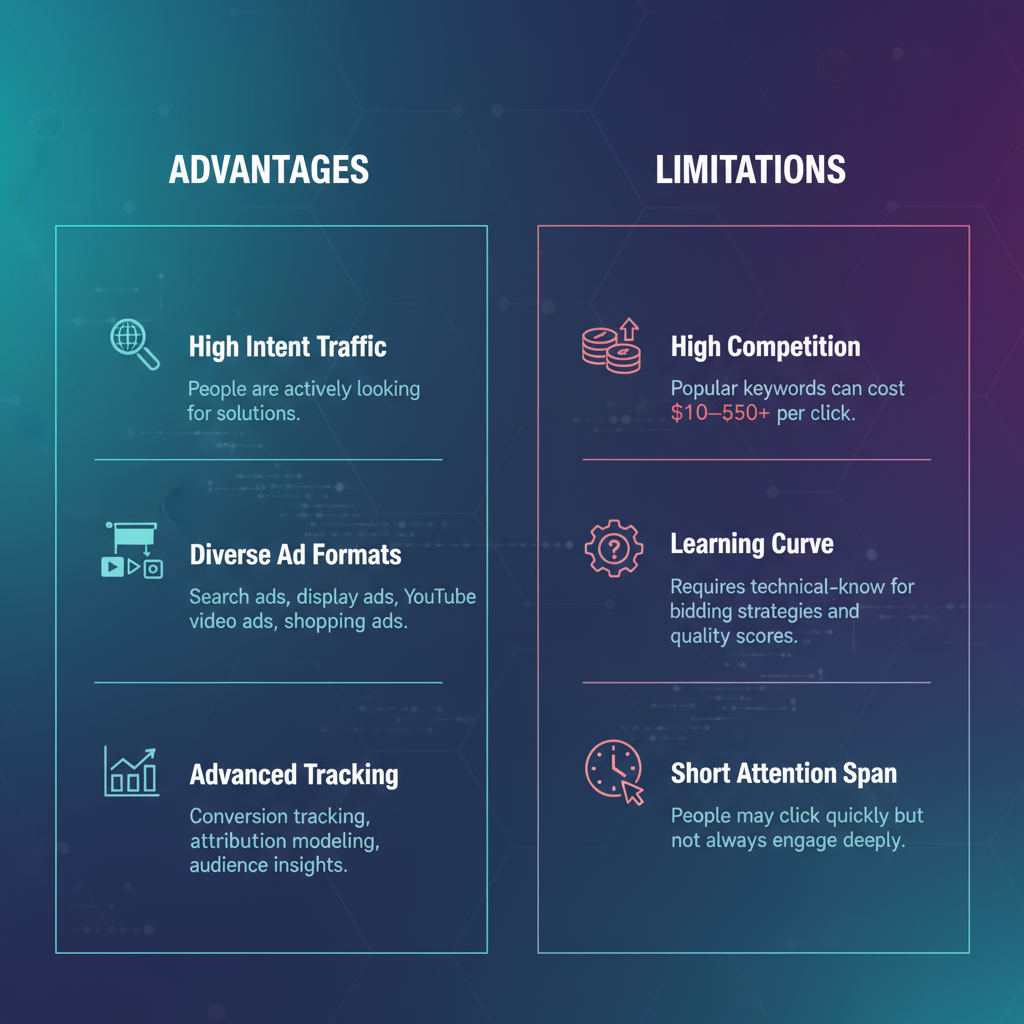
Advantages of Google Ads
- High Intent Traffic – Rather than a passive audience, people are actively searching or looking for solutions.
- Massive Reach – Google has over 8.5 billion searches each day.
- Variety of Ads – You can run search ads, display ads, Youtube video ads, and shopping ads.
- Advanced Tracking – You can easily track conversions, attribute/track results across channels and gain insight from audiences.
Limitations of Google Ads
- High Competition – Popular keywords can range from $10-$50+ for every click.
- Learning Curve – Typically requires specialized technical knowledge to be aware of bidding strategies and the quality scores of Ads.
- Short Attention Span – Users might click through but many web searchers are not deeply engaged or thinking as they click through.
Facebook Ads: The Power of Audience Targeting
How Facebook Ads Works
Facebook Ads (which also involves Instagram Ads) is based on a model of social discovery. Unlike Google (which provides a solution for users looking for your specific product), users aren’t browsing on Facebook for your product—they’re stumbling across it mid-scroll in their feed. Ads are also based on audience targeting (demographics, interests, or behaviors, or lookalike audiences).
Example: You sell high-end watches. With Facebook Ads, you can target males 25-40 who are interested in Rolex watches, traveling, and other high-end brands. Your audience, even if they weren’t looking for a watch, will be at least mildly interested in your product.
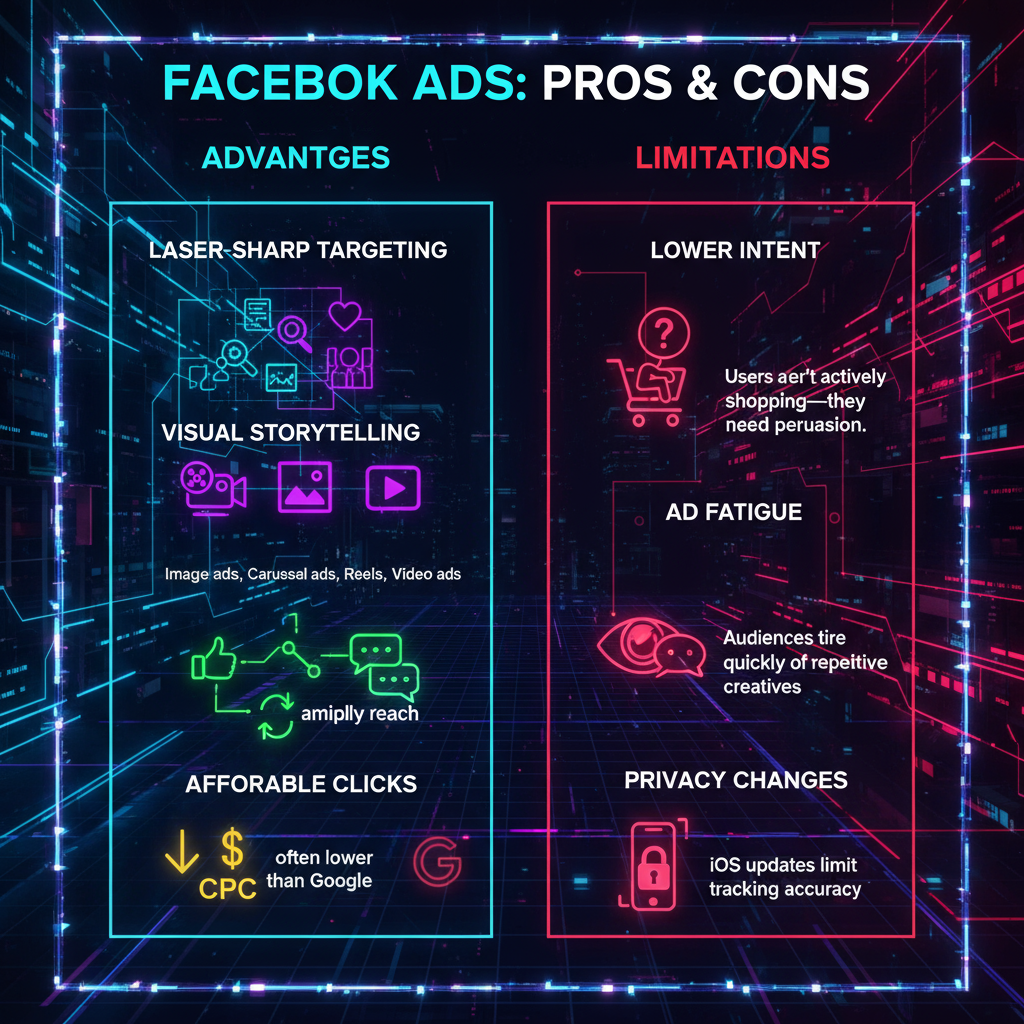
Advantages of Facebook Ads
- Laser sharp targeting – demographics, interests, behaviors, lookalikes.
- Visual story-telling – image ads, carousel ads, Reels, video ads.
- Strong engagement – likes, shares, comments engage the user.
- Affordable clicks – CPC is often lower than google.
Limitations of Facebook Ads
- Lower intent – Users are not actively shopping, they need persuasion.
- Ad fatigue – Audiences tire quickly of the same creative.
- Privacy – Changes to iOS may impede the ability to track.
ROI Battle: Google Ads vs Facebook Ads
Cost-Per-Click (CPC) Comparison
- Google Ads: High CPC in competitive industries (finance, insurance, legal). Average $2–$4.
- Facebook Ads: Generally cheaper. Average $0.50–$1.50 CPC.
Conversion Rates
- Google Ads: Higher average conversion rates (3.75% for search).
- Facebook Ads: Lower conversion rates (~2%) but compensates with cheaper traffic.
Customer Journey Fit
- Google Ads: Shines in bottom-funnel conversions—users ready to buy.
- Facebook Ads: Excels in top-funnel awareness and mid-funnel nurturing.
Long-Term ROI
A combined strategy often delivers the best ROI.
- Use Facebook Ads to build awareness and generate leads.
- Retarget those leads with Google Ads when they’re actively searching.
Which Platform Works Better for Your Business?
For E-Commerce Stores
- Facebook Ads: Excellent for product display, impulse purchasing, and remarketing.
- Google Ads: More suitable for high-intent purchases (“buy iPhone 15 online,” for example).
For Local Businesses
- Google Ads: Very well suited for local searches (“dentist near me”)
- Facebook Ads: Good for branding and special offers.
For B2B Companies
- Google Ads: Best for capturing decision-makers who are searching for solutions.
- Facebook Ads: Great for lead nurturing and retargeting campaigns.
For Startups with Small Budgets
- Start out using Facebook Ads to experiment with your audience’s and creatives cheaply.
- Then, scale with Google Ads once you know what your keywords will be.
Strategies to Maximize ROI
- A/B Testing: Test variations of headlines, creatives, and CTAs.
- Retargeting: Advertise to users who’ve already visited your Web site.
- Lookalike Audiences: Reach audiences that look like your best customers.
- Smart Bidding: Google Ads automatically bid with machine learning.
- Omnichannel Approach: Utilize both channels for awareness + intent.
Future of Paid Advertising
The digital advertisement environment is transforming with privacy updates, AI, and automation. Google and Facebook, for instance, are setting-up tools to do the targeting and bidding optimization using ML. ROI won’t be a question of one versus the other, but rather synergy.
Think about it: Facebook brings in the right audience, Google converts that audience when their intent is highest, and AI does all of this without lifting a finger. Ultimately, businesses that embrace this ecosystem will win.
Conclusion
There isn’t a uniform victor in the Google Ads or Facebook Ads ROI debate. It all depends on your industry, target market, and goals.
- If you need high-intent conversions fast, Google Ads is the winner.
- If brand awareness and engagement at scale is the goal, Facebook Ads is the clear winner.
- If you want to maximize ROI, then smartly utilizing both Google Ads and Facebook Ads will benefit your organization the most.
Strong marketers aren’t asking the question “Google or Facebook?” but they are asking “How can we leverage both platforms for growth?”
For more such articles click here.
FAQs
Which is more economical: Google Ads or Facebook Ads?
Facebook Ads average to a lower cost per click, while Google Ads would yield more conversions with intent.
Can small businesses utilize Google Ads?
Absolutely. The value of Google Ads is in targeting local search or niche keywords within a smaller budget to yield a profitable return on investment.
Have Facebook Ads lost relevance post iOS privacy?
Not necessarily. Tracking is slightly more difficult but utilizing first-party data, retargeting and custom audiences will still yield results.
Which platform is better for brand purpose?
Facebook Ads deliver the better option due to enticing visual storytelling and the enormous amount of engagement on the platform.
Can you use Google and Facebook Ads concurrently?
Yes. In fact, these two channels generally provide the best pricing in the advertisement market as they cover the different stages of the customer journey.
Do video ads perform better than static images?
Video ads on Facebook average to comparatively higher engagement. On Google, YouTube ads are a more effective platform for engagement and awareness.
What industries see the most benefit from Google Ads?
Industries with immediate demand—such as legal, healthcare, finance, and real estate tend to do exceptionally well.
What kind of ROI metrics should I use for both?
There are key metrics to consider: CPC (Cost per Click), conversion rate, ROAS (Return on Ads Spend), and customer lifetime value.
Can Facebook Ads drive sales for B2B?
Yes, although Facebook Ads are accomplishing this more for lead generation or retargeting and less so for immediate purchases.
Where should I get started as a beginner?
Get started on Facebook Ads to test audiences at an affordable price, and then move to Google Ads when you have identified higher learning intent.
